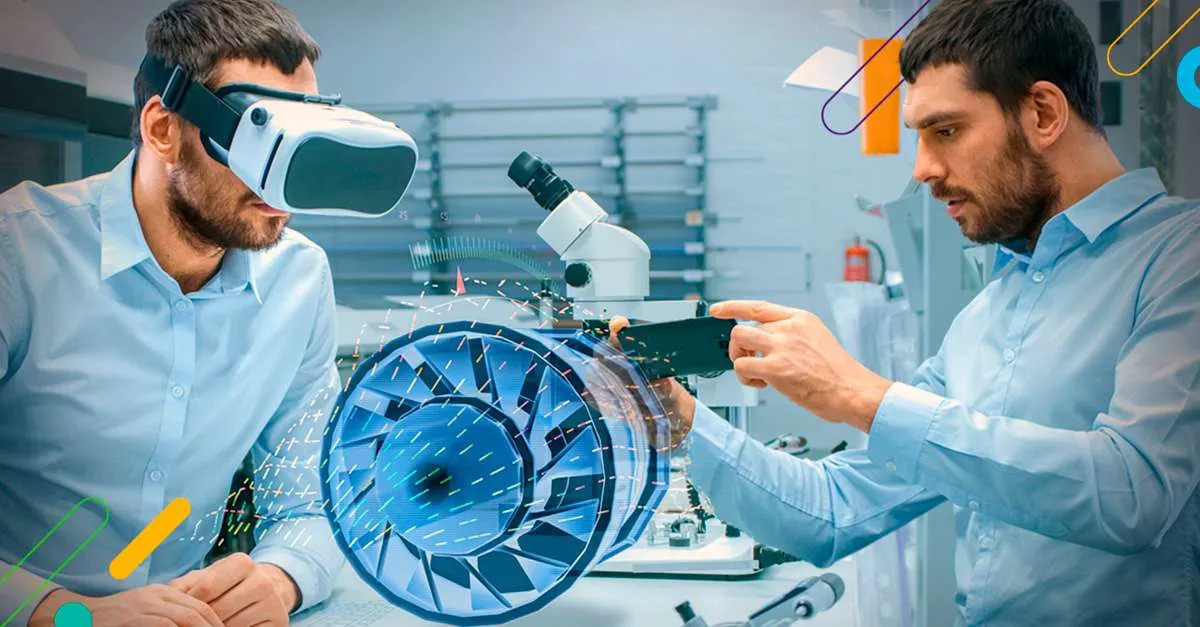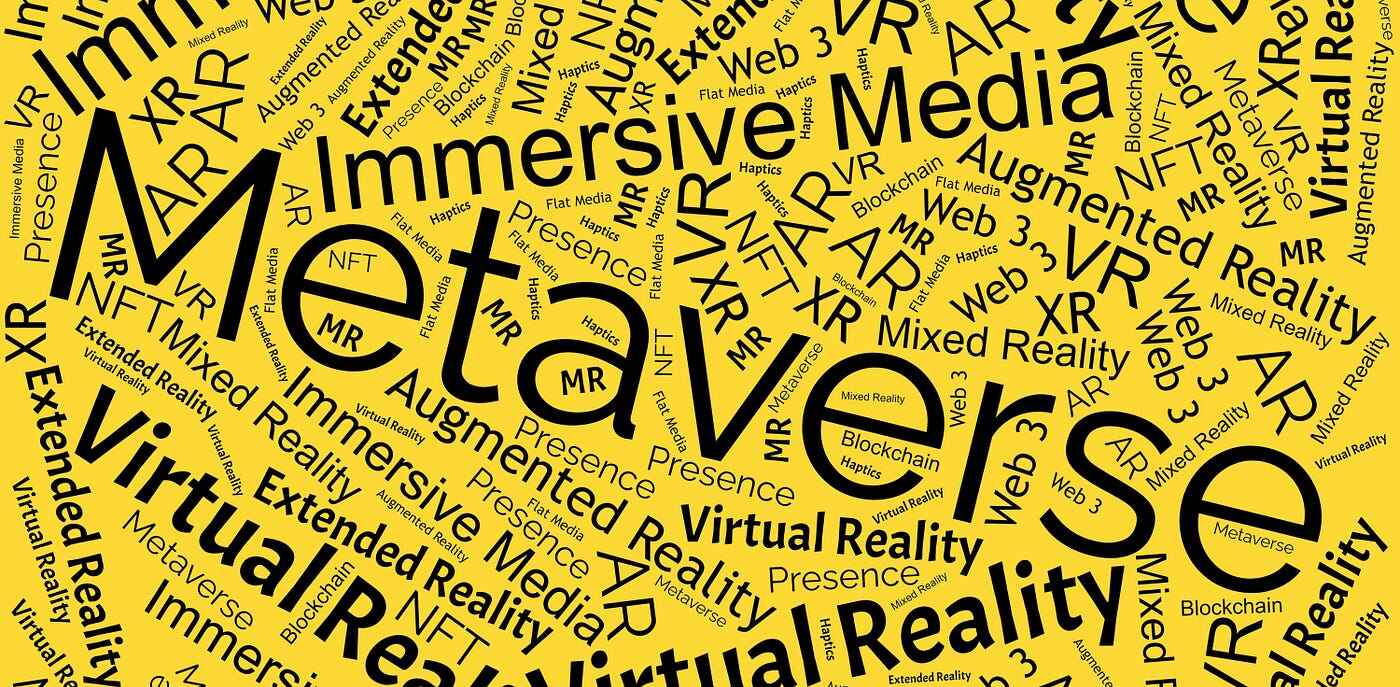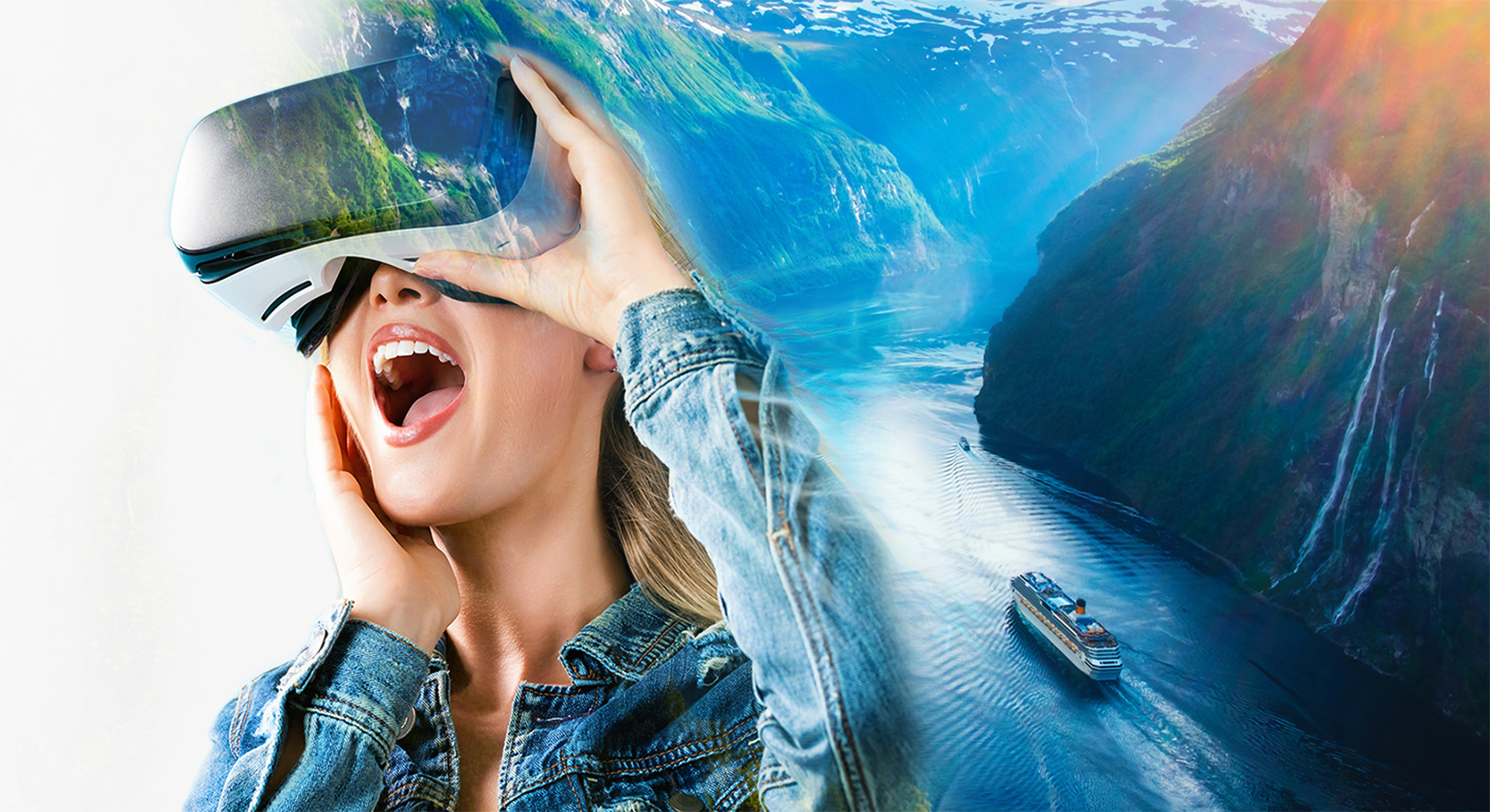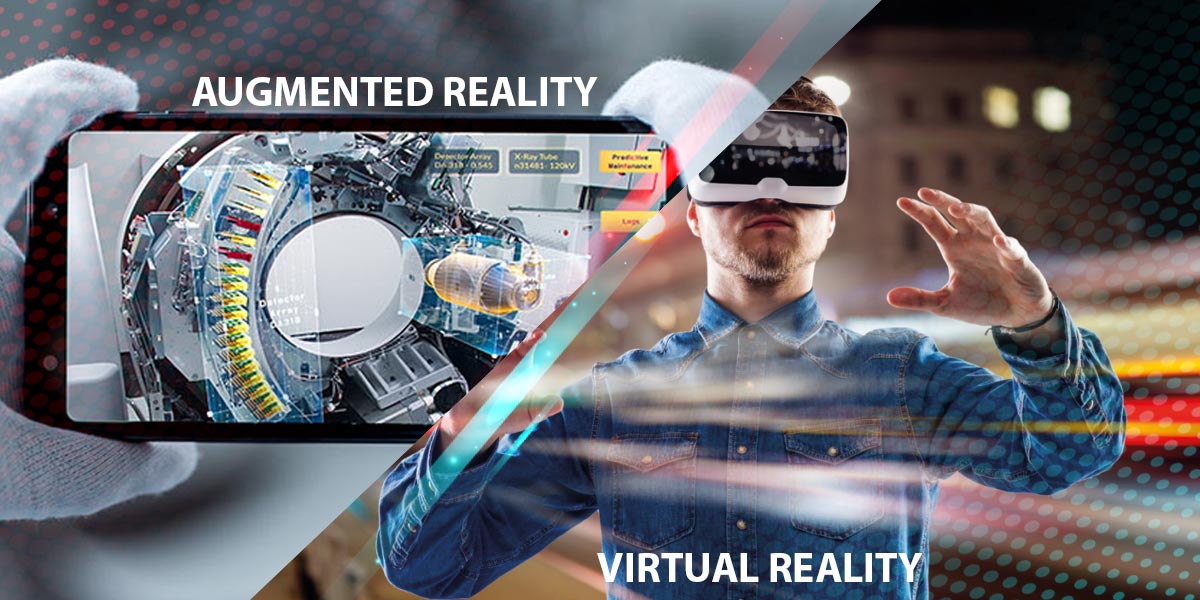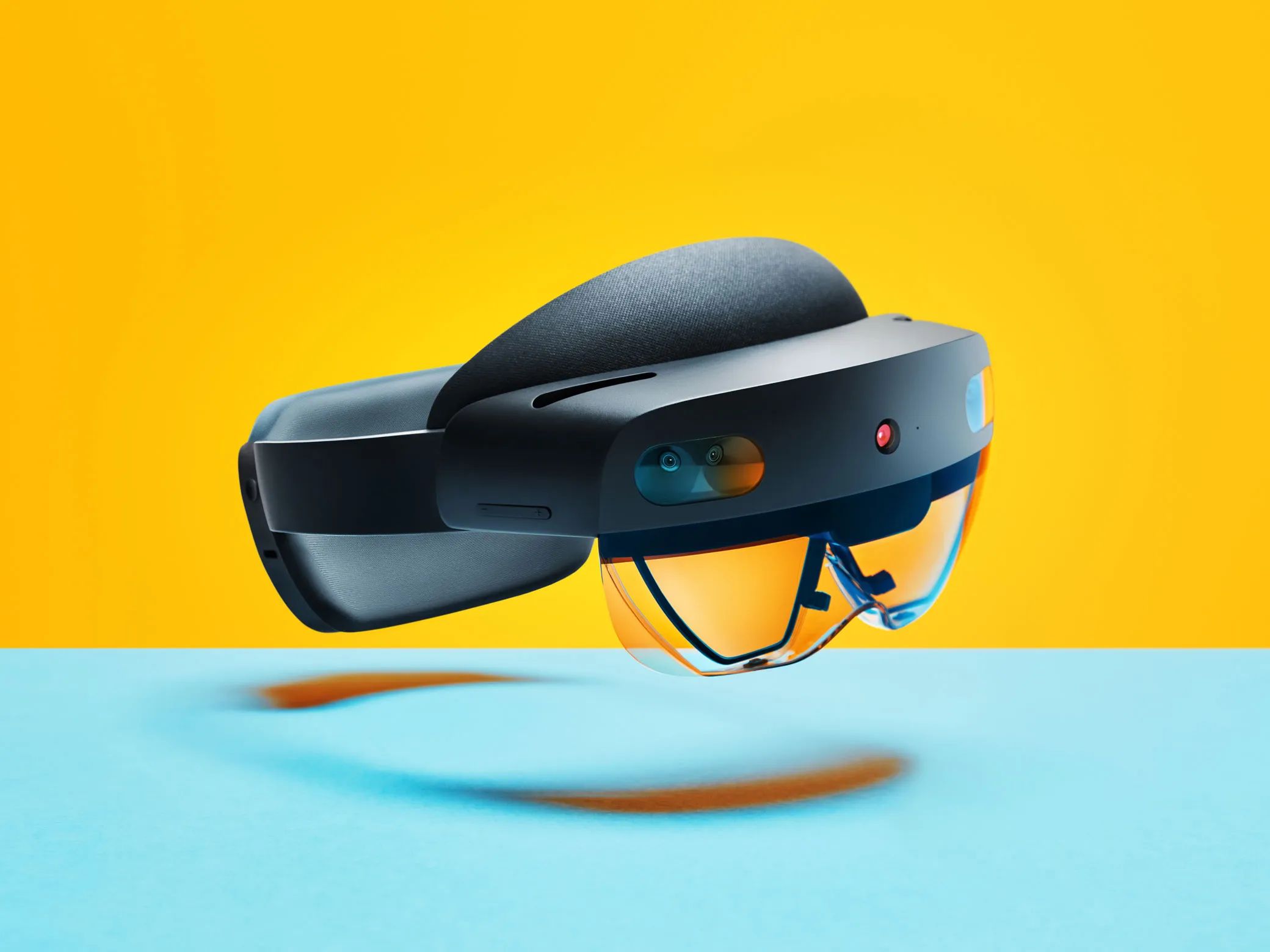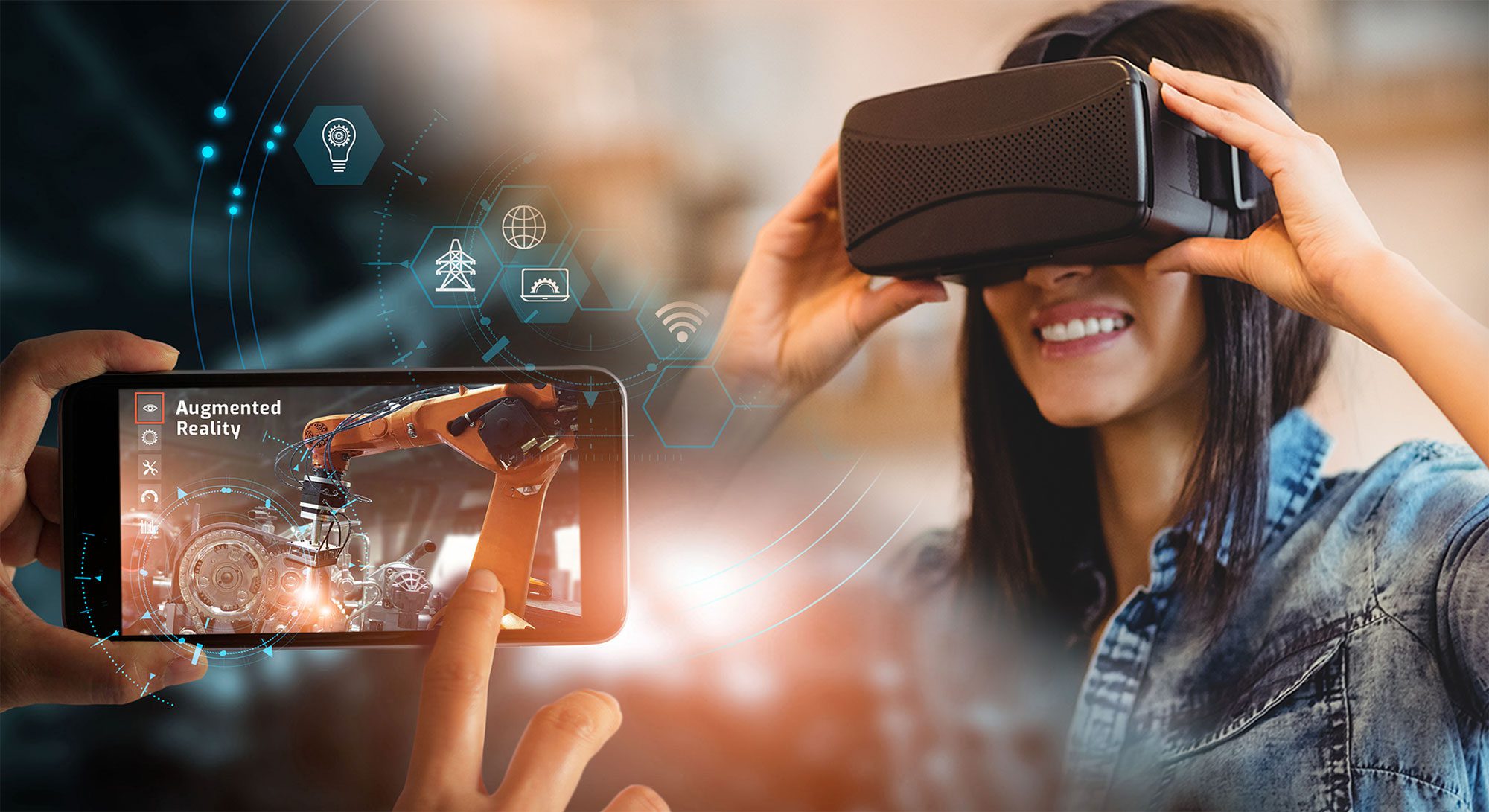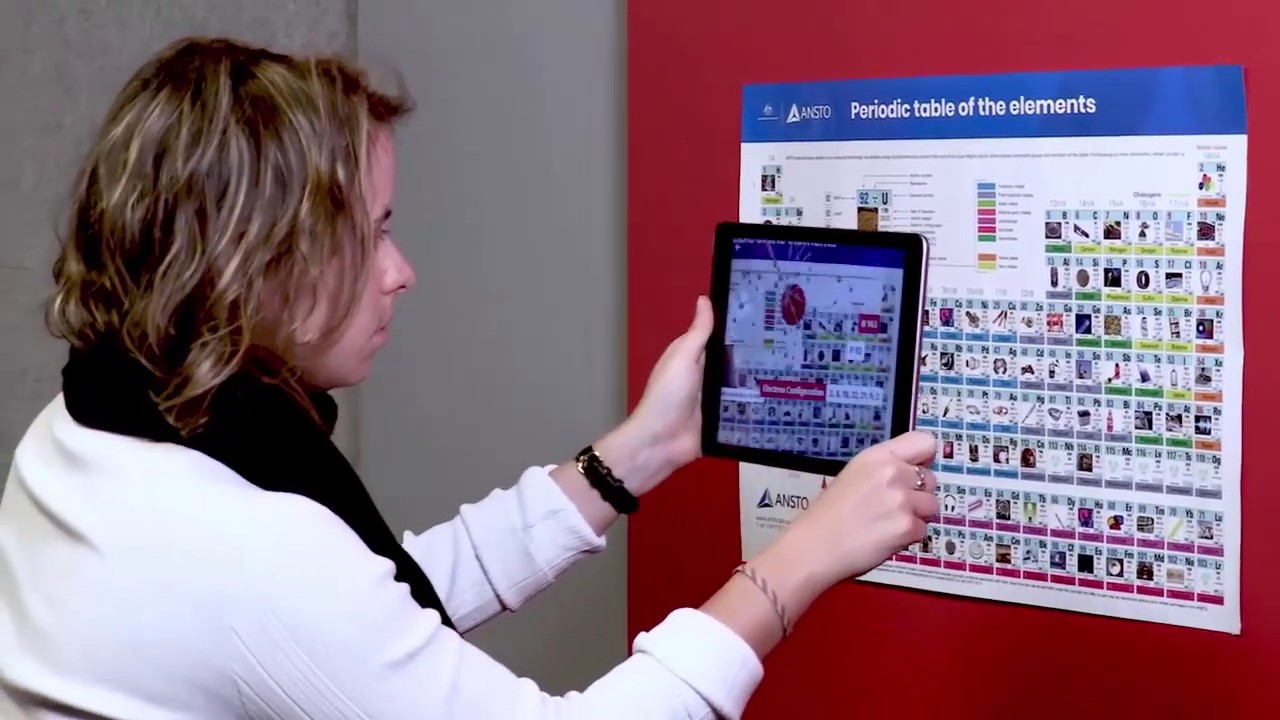Gaming
The applications of virtual reality in gaming have revolutionized the way people experience interactive entertainment. With the use of virtual reality headsets and controllers, players can immerse themselves in a virtual world that replicates real-life scenarios or fantasy realms. This technology takes gaming to a whole new level by creating a sense of presence and allowing players to physically interact with their virtual surroundings.
Virtual reality gaming offers a more realistic and immersive experience compared to traditional gaming platforms. Players can explore virtual landscapes, engage in intense battles, and solve puzzles in ways that were previously unimaginable. The ability to move and interact in a three-dimensional space adds a new layer of excitement to gaming, enhancing the overall gaming experience.
Moreover, virtual reality gaming has opened up new possibilities for multiplayer experiences. With the advancements in virtual reality technology, players can now connect and play with others from around the world in virtual environments. This not only expands the social aspect of gaming but also creates a more collaborative and immersive experience.
Virtual reality also has the potential to transform the world of esports. With the ability to fully immerse themselves in the game, players can enhance their skills and reaction times, leading to more competitive gameplay. Spectators can also join in the virtual experience, watching matches from within the game and feeling like they are part of the action.
From first-person shooter games to sports simulations, virtual reality has the capability to transport players into a world where the line between reality and the game becomes blurred. The advancements in virtual reality technology continue to push the boundaries of gaming, offering endless possibilities for immersive and unforgettable gaming experiences.
Training and Simulations
Virtual reality has become a valuable tool in various industries for training and simulations. The immersive nature of virtual reality allows trainees to practice real-life scenarios in a safe and controlled environment, without the risk of physical harm or costly resources. This technology has the potential to transform the way we learn and acquire new skills.
In fields such as aviation, virtual reality simulations are used to train pilots in different flight conditions, emergency scenarios, and instrument procedures. The realistic visuals and interactive simulations provide a hands-on experience that helps pilots develop their skills and decision-making abilities in a realistic and safe environment.
Medical professionals also benefit from virtual reality training. Surgeons can utilize virtual reality simulations to practice complex procedures before operating on actual patients. This not only enhances their skills and confidence but also improves patient safety by reducing the risks associated with surgery. Similarly, virtual reality is used in healthcare education to train nurses, paramedics, and other healthcare professionals in various medical scenarios.
Military and law enforcement organizations use virtual reality simulations for training purposes. Soldiers can practice combat scenarios, tactical maneuvers, and scenario-based training in virtual environments that closely resemble real-world situations. This type of training helps improve decision-making, teamwork, and situational awareness, ultimately leading to better preparedness on the field.
Virtual reality is also utilized in industrial training, where workers can familiarize themselves with complex machinery or hazardous environments. By simulating dangerous situations, workers can learn how to respond effectively and minimize risks without putting themselves in harm’s way.
Overall, virtual reality has proven to be a transformative tool for training and simulations across various industries. It provides a safe and cost-effective means to practice skills and scenarios that would otherwise be difficult, dangerous, or expensive. The immersive and interactive nature of virtual reality enables trainees to gain practical experience and prepare themselves for real-world situations, ultimately improving performance and safety.
Healthcare and Medicine
The applications of virtual reality in healthcare and medicine have opened up new possibilities for diagnosis, treatment, and patient care. Medical professionals are utilizing this technology to enhance medical procedures, alleviate pain, and improve patient outcomes.
One of the significant applications of virtual reality in healthcare is in pain management and distraction therapy. By immersing patients in virtual environments that are calming and engaging, virtual reality can help divert the patient’s attention away from pain and discomfort. This has been particularly effective in pediatric care, where children undergoing medical procedures or treatments can be distracted and remain calm.
Virtual reality has also been used in rehabilitation therapy. Patients recovering from injuries or undergoing physical and occupational therapy can engage in virtual reality exercises that mimic real-world activities. This helps to improve motor skills, coordination, and balance while providing a motivating and enjoyable rehabilitation experience.
Furthermore, virtual reality has proven to be valuable in psychological therapy. Patients suffering from phobias, anxiety disorders, or post-traumatic stress disorder (PTSD) can be exposed to virtual scenarios that replicate their fears and triggers. This controlled exposure therapy allows patients to confront and gradually overcome their fears in a safe and monitored environment.
In surgical procedures, virtual reality plays a crucial role in pre-operative planning and training. Surgeons can use virtual reality to visualize a patient’s anatomy in 3D, facilitating better understanding and preparation for complex surgeries. This technology also allows surgeons to practice procedures in a virtual environment, reducing the risk of errors during actual surgery.
In medical education, virtual reality provides a more immersive and interactive learning experience. Medical students can explore the human body in a virtual environment, gaining an in-depth understanding of anatomy and physiology. This technology also aids in enhancing surgical training, as students can practice techniques and procedures in a controlled virtual setting.
With virtual reality, healthcare professionals have the ability to improve patient outcomes, enhance patient experiences, and advance medical research. As the technology continues to evolve, virtual reality is likely to play an even more significant role in revolutionizing healthcare and medicine.
Architecture and Design
Virtual reality has become a game-changer in the field of architecture and design, enabling architects and designers to create, visualize, and modify their projects in a highly immersive and interactive way. This technology has revolutionized the design process and has numerous benefits for professionals in the industry.
With virtual reality, architects can create virtual representations of their designs, allowing clients and stakeholders to virtually experience and explore the proposed spaces. This immersive experience helps clients better understand and visualize the design concept, improving communication and reducing the chances of misinterpretation.
Virtual reality also enables architects to get a better sense of scale and proportion before finalizing designs. By immersing themselves in a virtual environment, architects can gain a realistic perception of the spatial relationships within a building, ensuring that the design meets the desired specifications and objectives.
In addition, virtual reality allows for real-time design modifications. Architects can make changes to the virtual model and instantly see the impact on the overall design. This iterative design process saves time and resources, as adjustments can be made before the construction phase, reducing the likelihood of costly revisions.
Virtual reality also aids in the evaluation of architectural designs in terms of lighting, acoustics, and ergonomics. Architects can simulate lighting conditions and assess the impact of natural and artificial light on the ambiance of a space. Similarly, they can evaluate the acoustic properties of a room and make necessary adjustments to improve sound quality. Additionally, virtual reality allows architects to test the ergonomics of a space, ensuring optimal functionality and user experience.
Furthermore, virtual reality is being used in architectural walkthroughs and virtual tours. Potential clients, investors, and buyers can virtually explore a property or project before it is physically built. This creates a more engaging and interactive experience, helping to market and promote architectural projects effectively.
The application of virtual reality in architecture and design has streamlined the design process, improved stakeholder communication, and enhanced the overall quality of architectural projects. As virtual reality technology continues to advance, it will further revolutionize the industry, giving architects and designers unprecedented tools to bring their visions to life.
Marketing and Advertising
Virtual reality has emerged as a powerful tool in the realm of marketing and advertising, offering unique and engaging experiences for consumers. This technology allows brands to create immersive and interactive campaigns that capture attention and leave a lasting impression.
One of the key applications of virtual reality in marketing is in product demonstrations. Virtual reality can transport consumers into a virtual environment where they can interact with and experience products first-hand. This enables brands to showcase their products in a more engaging and memorable way, enhancing consumer understanding and interest.
Virtual reality also provides an opportunity for brands to create virtual showrooms or stores. Consumers can virtually browse through products, visualize how they would look in real-life settings, and make informed purchase decisions. This virtual shopping experience offers convenience and personalization, providing a unique way to connect with consumers.
In the realm of experiential marketing, virtual reality enables brands to create immersive brand experiences and storytelling. Brands can transport consumers into virtual worlds that align with their brand values and immerse them in memorable brand narratives. This helps create a deeper emotional connection and brand loyalty.
Virtual reality has also made a significant impact on event marketing. Brands can use virtual reality to create interactive experiences at trade shows, conferences, and other events. Attendees can engage with virtual reality booths, participate in virtual demos, or even attend virtual events. This enhances the overall event experience and helps brands stand out from the competition.
Moreover, virtual reality has the potential to revolutionize location-based marketing. Brands can create virtual reality experiences at physical locations, allowing consumers to interact with augmented virtual elements in the real world. This blurring of the lines between physical and virtual spaces creates unique marketing opportunities.
Virtual reality has become a valuable tool for marketers and advertisers to deliver immersive and impactful campaigns. By leveraging this technology, brands can captivate audiences, build brand awareness, and create memorable brand experiences that leave a lasting impression.
Education
Virtual reality has revolutionized the field of education, transforming the way students learn and engage with information. By creating immersive and interactive learning experiences, virtual reality has the potential to enhance comprehension, engagement, and knowledge retention.
One of the key benefits of virtual reality in education is its ability to transport students to different locations and time periods. Students can explore ancient civilizations, visit historical landmarks, or embark on virtual field trips without leaving the classroom. This provides a deeper level of understanding and immersion, bringing learning to life in a way that traditional textbooks or videos cannot.
Virtual reality also enables students to interact with complex concepts and phenomena. For subjects like science and engineering, students can manipulate virtual objects, experiment with variables, and observe cause-and-effect relationships in a controlled and visual manner. This hands-on approach fosters critical thinking, problem-solving skills, and a deeper understanding of the subject matter.
Furthermore, virtual reality can cater to different learning styles and needs. Students with visual or auditory impairments can benefit from immersive experiences that utilize other senses to present information. Virtual reality can also provide personalized learning experiences, adapting content and difficulty levels based on individual student progress and preferences.
Virtual reality is particularly valuable in medical and healthcare education. Medical students can practice procedures, diagnose illnesses, and explore human anatomy in virtual reality environments. This immersive training experience helps them gain practical skills and confidence before working with real patients.
By allowing students to collaborate and interact within a virtual environment, virtual reality also enhances teamwork and communication skills. Students can work together on projects, solve problems, and share knowledge in a virtual space, fostering collaboration and peer learning.
In addition, virtual reality can bridge the gap between theoretical knowledge and real-world applications. By simulating professional environments, virtual reality can prepare students for future careers and give them a glimpse into various industries and professions.
Overall, virtual reality has the potential to revolutionize education by making learning more interactive, engaging, and immersive. As this technology continues to advance, it is expected to play an increasingly significant role in classrooms, unlocking new possibilities for teaching and learning.
Entertainment and Media
Virtual reality has significantly impacted the entertainment and media industries, offering new and immersive experiences for consumers. From movies and live events to interactive storytelling, virtual reality has opened up a whole new realm of possibilities.
In the world of movies and cinema, virtual reality has introduced a new way of storytelling. Viewers can be fully immersed in the narrative, experiencing the events and emotions as if they were part of the story themselves. Virtual reality movies provide a sense of presence and interactivity, allowing viewers to look around and explore the virtual environment.
Live events, such as concerts, sports matches, and theater performances, have also embraced virtual reality. Virtual reality technology allows audiences to experience these events from the comfort of their own homes, as if they were physically present. This opens up opportunities for people who may not have the means or ability to attend these events in person.
Virtual reality gaming has taken entertainment to a whole new level. Virtual reality headsets and controllers provide a more immersive and interactive gaming experience, allowing players to physically engage with the virtual world. Players can explore new worlds, overcome challenges, and interact with virtual characters in a way that traditional gaming cannot replicate.
Virtual reality has also made an impact on the music industry. Musicians and artists can create virtual reality music videos, where viewers can be transported into captivating visual worlds that accompany the music. This adds a new dimension and visual storytelling element to the music experience.
The media industry has also embraced virtual reality. News organizations can use virtual reality to provide immersive and in-depth reporting, allowing viewers to experience events and locations as if they were there. Virtual reality can also enhance educational media, providing a more engaging and interactive way to learn and explore various topics.
Moreover, virtual reality has created new opportunities for advertising and brand promotions. Brands can create immersive virtual reality experiences that engage consumers and leave a lasting impression. Virtual showrooms, product demonstrations, and interactive brand experiences are just a few examples of how virtual reality is utilized in marketing and advertising.
Overall, virtual reality has transformed the entertainment and media landscape by offering immersive and interactive experiences. As technology continues to evolve, virtual reality is expected to play an increasingly prominent role in creating unforgettable entertainment and media experiences.
Travel and Tourism
Virtual reality has revolutionized the travel and tourism industry, offering new ways for people to explore destinations and experience different cultures without physically traveling. This technology has opened up a whole new realm of possibilities, providing immersive and interactive virtual travel experiences.
One of the key applications of virtual reality in travel and tourism is virtual tours. Users can put on a virtual reality headset and be transported to famous landmarks, historical sites, or natural wonders around the world. Virtual tours provide a realistic and interactive experience, allowing users to look around, move through the virtual environment, and learn about the destination’s history and significance.
Virtual reality also offers the opportunity to virtually visit hotels, resorts, and accommodations. Users can explore different rooms, amenities, and facilities before making a booking decision. This virtual experience provides a more accurate representation of the property, giving potential travelers a better understanding of what to expect.
Furthermore, virtual reality can enhance travel planning and decision-making. Users can virtually experience different destinations, attractions, and activities, helping them make informed choices about their travel itineraries. Virtual reality can showcase the highlights and unique aspects of each destination, aiding in the selection process.
Virtual reality can also be used to create virtual travel experiences that are not possible in real life. Users can explore fictional worlds, visit outer space, or revisit past eras through virtual reality. This opens up new possibilities for immersive storytelling and entertainment within the travel and tourism space.
Moreover, virtual reality has the potential to bridge language and cultural barriers. Users can experience virtual language lessons, learn about different cultures, and interact with virtual locals in immersive environments. This helps promote cross-cultural understanding and empathy among travelers.
In the wake of the COVID-19 pandemic, virtual reality has become even more relevant and valuable for the travel and tourism industry. As travel restrictions and health concerns limit physical travel, virtual reality offers an alternative way for people to fulfill their wanderlust and explore the world from the comfort of their homes.
Overall, virtual reality has transformed the travel and tourism industry by offering immersive and interactive experiences. This technology expands the possibilities of travel, making it more accessible, engaging, and convenient for travelers around the world.
Sports
Virtual reality has made a significant impact on the world of sports, revolutionizing the way athletes train, spectators engage, and fans experience sporting events. This immersive technology has opened up new possibilities for performance enhancement, training simulations, and fan engagement.
One of the key applications of virtual reality in sports is training and skill development. Athletes can use virtual reality simulations to practice specific movements, scenarios, and strategies in a controlled and realistic environment. This allows them to enhance their skills, improve decision-making abilities, and mentally prepare for high-pressure situations.
Virtual reality can also aid in injury rehabilitation. Athletes recovering from injuries can use virtual reality exercises to simulate movements and gradually regain strength and mobility. This immersive approach to rehabilitation enhances motivation and accelerates the recovery process.
Additionally, virtual reality has transformed the way sports are broadcasted and consumed. With virtual reality cameras and headsets, spectators can have a more immersive viewing experience, feeling as if they are in the stadium or on the field. This enhances the sense of presence and engagement with the game, providing fans with unique perspectives and angles.
Virtual reality has also introduced the concept of virtual sports competitions. E-sports, where players compete in virtual environments, have gained significant popularity. Virtual sports enable fans to participate and engage in sports events, even without the physical abilities or access to traditional sports facilities.
Furthermore, virtual reality has enhanced the fan experience by providing interactive and engaging content. Fans can use virtual reality to meet their favorite athletes, explore sports memorabilia, and even participate in virtual sports training. This immersive experience deepens the connection between fans and their favorite teams or athletes.
Virtual reality is also being used in sports analysis and coaching. Coaches can use virtual reality simulations to examine game footage, analyze player performance, and devise strategies for upcoming matches. This technology aids in real-time decision-making and allows for better strategic planning.
In the future, virtual reality has the potential to disrupt sports training and competitions even further. Virtual reality may offer the possibility of competing against virtual opponents, practicing in virtual stadiums, and creating unique sporting experiences that surpass physical limitations.
Overall, virtual reality has transformed the sports industry, providing athletes, spectators, and fans with immersive and interactive experiences. As technology continues to advance, virtual reality will continue to shape the future of sports, offering unprecedented opportunities for training, performance enhancement, and fan engagement.
Social Virtual Reality
Social virtual reality has emerged as a groundbreaking application of technology, enabling people to connect and interact with each other in virtual environments. This immersive experience has redefined social interactions, bringing people together and fostering a sense of presence and community.
One of the key aspects of social virtual reality is the ability to interact with others as avatars in a virtual space. Users can meet friends, family, or even strangers from around the world, and engage in real-time conversations and activities. This creates a sense of being physically present with others, overcoming the limitations of physical distance.
Social virtual reality platforms offer various activities and experiences that can be shared with others. Users can participate in virtual events, explore virtual worlds, play games, or engage in collaborative projects. The ability to engage in shared experiences and activities enhances social connections and fosters a sense of camaraderie.
Virtual reality also provides a platform for self-expression and creativity. Users can customize their avatars, create virtual environments, and host virtual gatherings or events. This allows for personalization and individuality, enabling users to express themselves in unique ways within the virtual space.
Social virtual reality has the potential to break down barriers and promote inclusivity. Virtual environments can be designed to be more accessible and inclusive for people with disabilities or mobility limitations. Additionally, social virtual reality can foster cross-cultural interactions and facilitate communication among individuals from diverse backgrounds and languages.
Furthermore, social virtual reality can provide therapeutic benefits. Virtual support groups and therapy sessions can be conducted, offering individuals a safe and immersive space to share their experiences and seek emotional support. The sense of presence and connection in social virtual reality can contribute to well-being and a sense of belonging.
Social virtual reality is also being embraced by businesses and organizations. Virtual conferences, meetings, and employee collaborations can take place in virtual environments, saving time, travel costs, and ecological impact. Moreover, brands can create virtual spaces to engage with customers, gather feedback, and provide immersive brand experiences.
As technology continues to advance, social virtual reality will likely become even more immersive and accessible. The potential for creating shared memories, forming meaningful connections, and fostering a sense of community within virtual spaces holds great promise for the future of social interactions.







